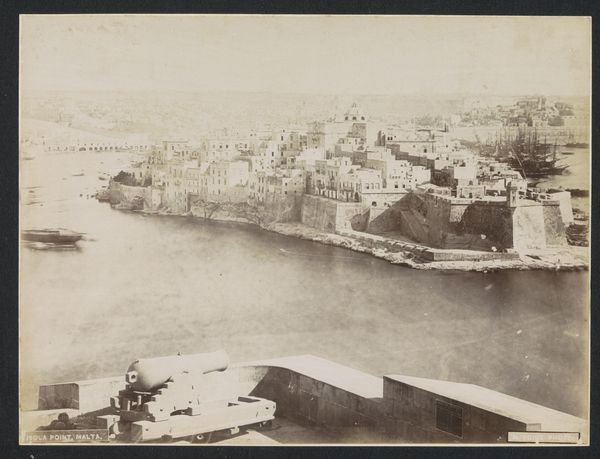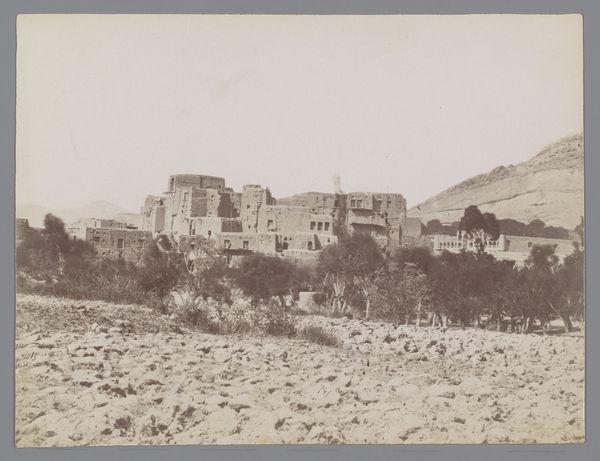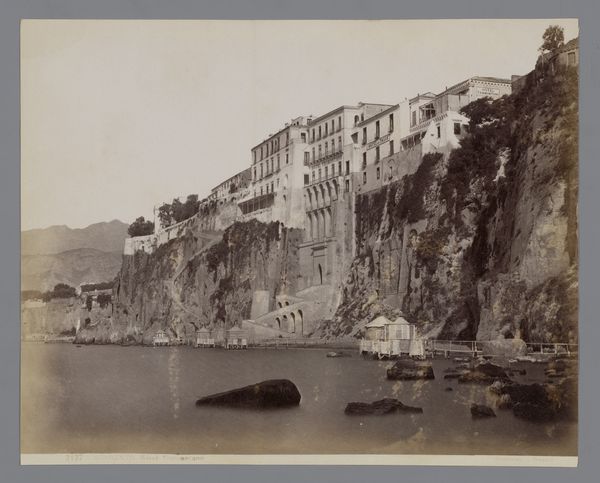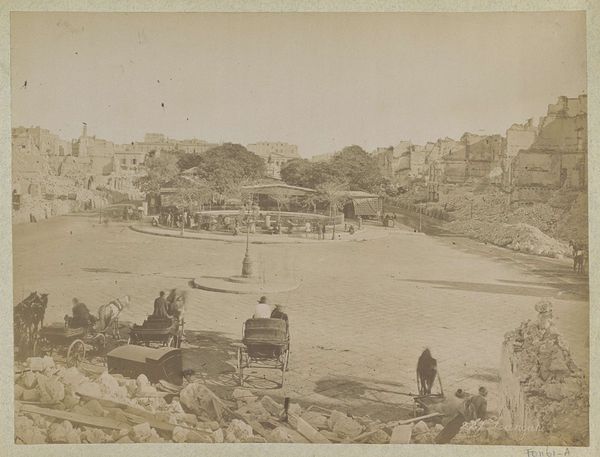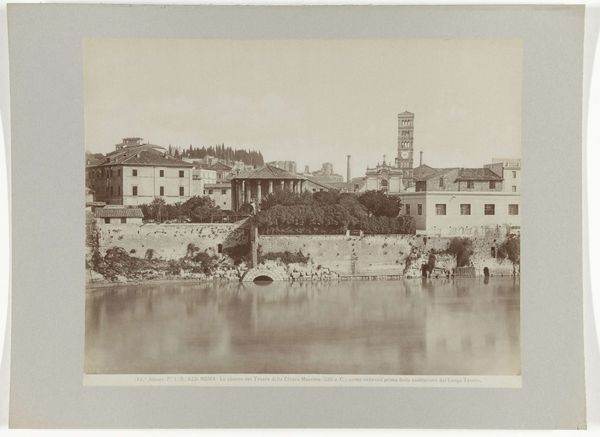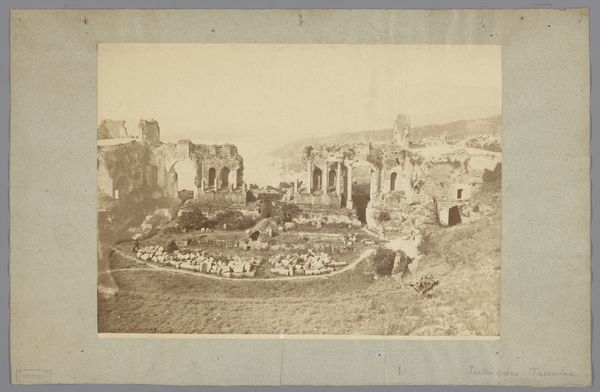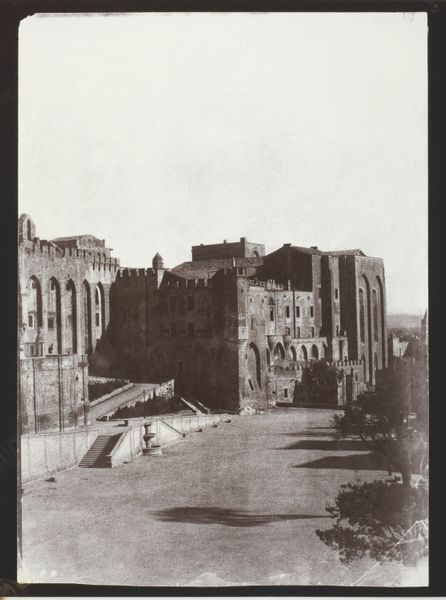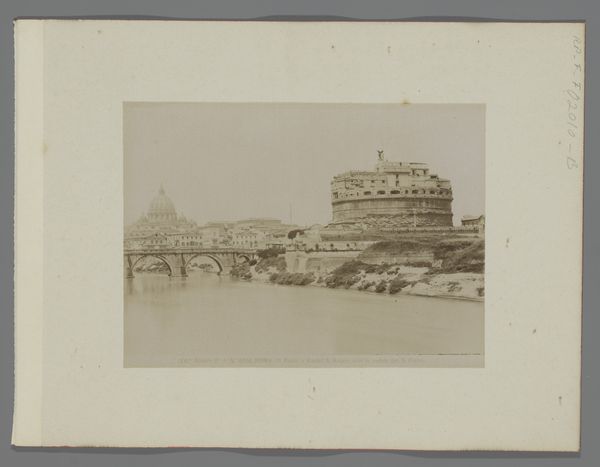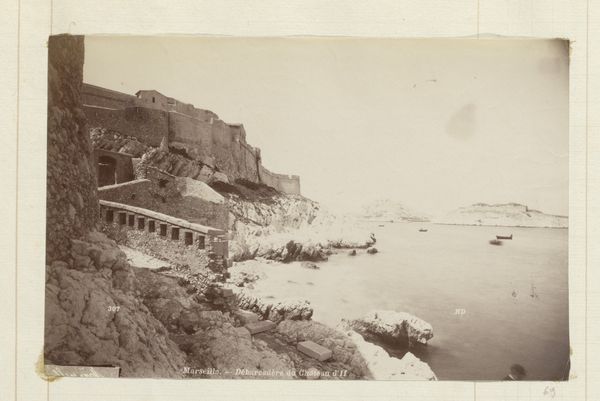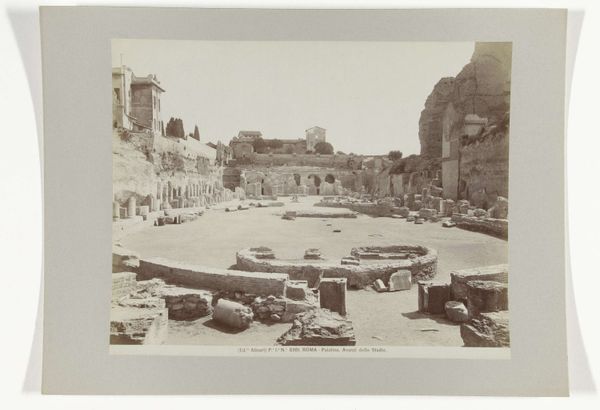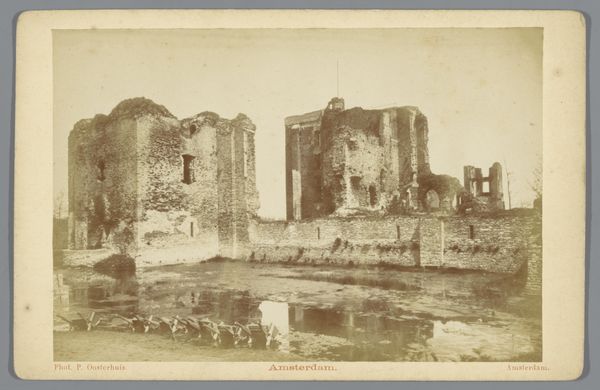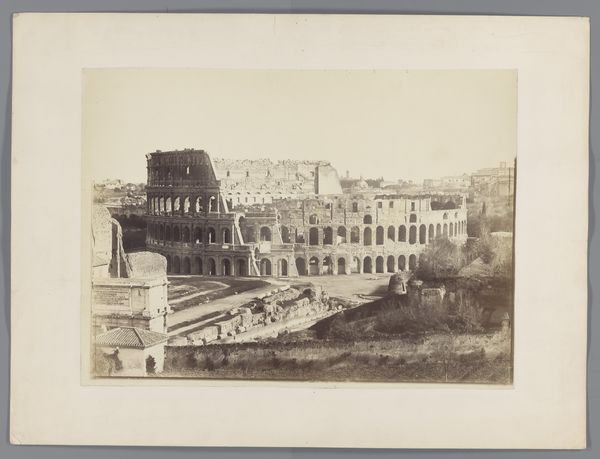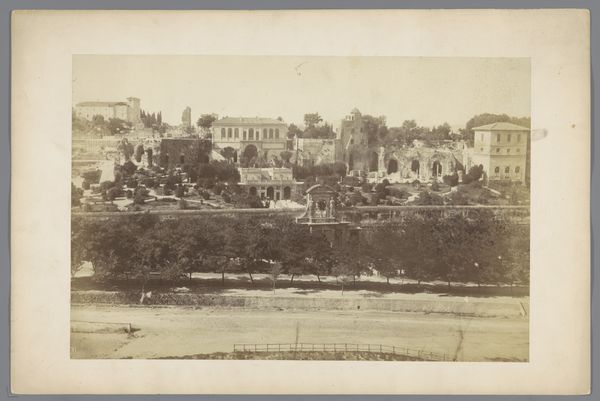
photography
#
landscape
#
photography
#
cityscape
#
islamic-art
Dimensions: height 155 mm, width 204 mm
Copyright: Rijks Museum: Open Domain
This photograph by Antoine Sevruguin captures Shûshtar, Iran, presenting a striking image of urban construction meeting the natural world. Here we see the enduring presence of architectural ruins perched atop a hill beside a wide, flowing river. The ruins, with their arched openings and stark, angular forms, evoke a sense of history and the passage of time. Consider the symbolic role of ruins throughout history, reappearing across different cultures and eras. From the Roman Forum to the temples of Angkor, ruins are often used as potent symbols of past glory and the transient nature of human achievements. They elicit feelings of nostalgia and reflection, inviting viewers to ponder the cyclical rise and fall of civilizations. These architectural remnants have the power to connect us with the memories of past generations. Such images tap into our collective consciousness, reminding us of the enduring cycle of creation, decay, and renewal. By understanding the recurring motifs in visual culture, we can gain deeper insights into the shared human experience across time and space.
Comments
No comments
Be the first to comment and join the conversation on the ultimate creative platform.
